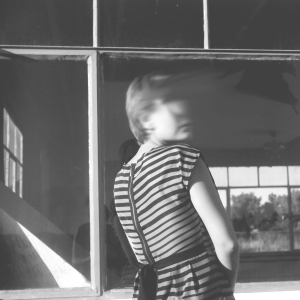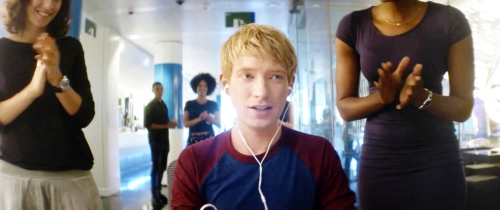Wind River : An Analysis of Revisionist Western Film

From its start, Taylor Sheridan’s neo-western Wind River opens up with a nod to a traditional motif: a woman named Natalie (Kelsey Chow) is running barefoot in the night snow, besieged and struggling against Wyoming’s unforgiving winter. The next day, we see Cory (Jeremy Renner), a lone cowboy who does hunting and tracking for a living. Formerly married to a native from the Wind River Reservation, he has become familiar with the landscape, with those residing there, and is empathetic of their suppressive history. When Cory is called back on the reservation to hunt a pack of destructive mountain lions, he discovers Natalie’s frozen body. She was raped, and then escaped to run nearly 6 miles in the snow, and we later learn that Cory’s daughter died under similar circumstances, making the case that much more personal for him. FBI agent Jane Banner (Elizabeth Olson) arrives to head the investigation alongside Cory and the police, in lieu of seeking retribution for Natalie’s death. It’s clear early on that Wind River holds powerful allegory and commentary, particularly paralleling the crime rate tied to the Wind River Reservation in real life, where Sheridan has felt crime repercussions himself.
Beneath the film’s surface, the harsh western landscape plays the unifying enemy for the it’s characters. Early on, we see Natalie’s arrested for questioning and for heavy drug use (also rampant on modern-day reservations) and he remarks, “It’s this place[Wind River], man. Look what it takes from us, look what it took from you…” It’s clear that Sheridan not only plays off the traditional western story arcs, but he has also evoked a discussion regarding living environments on reservations, and how it’s continuously overlooked and undocumented.

Cory (Jeremy Renner) with Agent Jane (Olivia Goode)
The Wyoming landscape also plays a vital role in the detriment of Natalie and Pete, Pete being the nearby drill site worker who raped her. In this stand-off style scene, Pete’s “excuse” may come off as trite or ridiculous, but Sheridan is actually referencing the psychosocial, moral, and physical impacts frontier isolation.
With his hands tied, Pete yells “…[d]o you know what it’s like, out here in this frozen hell?!? Ain’t got nothing to do…ain’t no nothin, no women, just fucking snow, and the fucking silence, that’s all!”
To which Renner replies, “My family’s people were forced here, stuck here for a century. That snow and silence is the only thing that hasn’t been taken from them. So what’d you take?”
Thus, only fitting that the final western dule or stand-off isn’t between Pete and Cory (being a contemporary film, Cory represents a more reformed form of justice, and restrained violence), it’s between Pete and the merciless Wyoming winter. Pete loses. In a most poetic way, both Cory and Natalie’s father seem to find fair closure from his death. This is referred to as “frontier justice”—or personal justice—in western storytelling.
Here and throughout the film, Sheridan also does an impressive job modernizing the classic western revenge story of Cowboys vs. Indians. In the above “stand-off” and “shoot-out” scene, Cory–though cued as a modern cowboy himself–reminds Pete of the never-ending cultural war that stemmed from the white man’s maltreatment of Native Americans. Even though both Cory and Pete are Caucasian outsiders who are somewhat responsible for the natives’ current plight, Sheridan shows that it’s possible to take the moral high ground in hindering their oppression, rather than to condone it.
On the other hand, FBI agent Jane symbolizes the classic damsel in distress, modernized. Her distress factor is that she’s ignorant of the punitive landscape, of the native culture, and of the poverty and crime that besieges the reservation. Above all, she’s ignorant of how the white man’s colonization of the west has transformed all three. And as the western nomadic cowboy, it is ultimately Cory’s role to transform her mindset and her situation; in fact, Jane directly asks for his ongoing help at one point. Not only does he literally save her life in the shootout scene, but he carries her through and experience that is shocking, horrifying and enlightening at the same time. In fact, per western character traits, she is unable to reintegrate back into “traditional” society, having seen the lawlessness of the west. This is evident during the closing hospital scene, where she breaks down at the suggestion of trying to read a magazine.

Natalie (Kelsey Chow)
In regards to the continued Cowboys vs. Indians theme, also see more blatant references, such as the “We Kill Cowboys” slogan. It was spray painted on the inside of a trailer on the reservation. Later, we hear a drill site worker reference a native as a “feather head”, a derogatory term. Cory also shares a moment teaching his son how to calm and tame a horse on of the ranches, to which his son says, “That’s pretty cowboy, huh dad?”. Cory replies “No, son. That was all Arapahoe”. It’s made clear that a strong separation and stigma exists between both populations; his son assumes that because white father is teaching something, then it must be associated with cowboys and gunmen. It sheds light on a conflict that’s justified both in the film and in reality.

Natalie’s Dad (Gil Birmingam) with Cory. Here, her dad wears mourning face paint, but then admits to being so far separated from his native culture that he doesn’t even know what the paint represents, or if its pattern and coloring is accurate. This separation from his native culture reverts back to the theme of contemporary cowboys vs Indians; to the ongoing oppression that natives have endured since forced onto reservations, often forced practice their lifestyles and spirituality in secret.
Lastly, Sheridan seamlessly implants the drill site workers into the revenge plot. Together, the men represent what’s known as the western “outlaw gang”, a staple for many traditional plots. These gangs, however, only exist to thrive off of another main theme known to western film: Lawlessness. In the moments leading up to the shoot out in Wind River, one site worker points out “…this is private property, you [police] have no jurisdiction here..” Here, Sheridan has bluntly introduced lawlessness for two reasons: to create a realistic setting for a contemporary shootout, and to stir enough fear and tension to form a catalyst for the shootout.
In the shootout scene, it’s clear that they’ve formed a pack mentality and some sort of hierarchy. The gang has a premeditated scenario set up to unfold in their favor: they are called on trying to flank the officers before the shoot out occurs, and they also have 2 additional men hiding inside the trailer, waiting to open fire on officers and the FBI agent, once they hear the correct verbal signal from their “leader” outside.
In a flashback seen, we see what Natalie endured at the hands of those same men. While it may be difficult to catch at first glance, the rape scene also depicts the men acting in an almost premeditated state; like a pack of lions or wolves(perhaps paralleling the pack of lions that Cory has been hunting), almost hovering but actively waiting for Pete to distract the scene so that they can engage and defend him. As fighting breaks out in that scene, the men actively look at Natalie, not her boyfriend Matt. They seem to stare and stand in a collective manner that tells us they are on the attack.
Overall, Sheridan has created a multi-faceted take on the traditional western, and after three films, he seems to have mastered blending western story arcs with modern day socio-political concerns. Wind River is a film that sheds light on the underreported plights on native reservations, and also the particularly high crime rate on the actual reservation of the same name in Wyoming, which is among the worst in the nation. It’s Sheridan’s hope that his film brings real justice and support to such native communities, rather than be seen as just a revenge story in a film.



















